|
Remains of the
Radio Station at Kamina, Togo
Photos by Marcia Faria
2010 at
WikiCommons
|
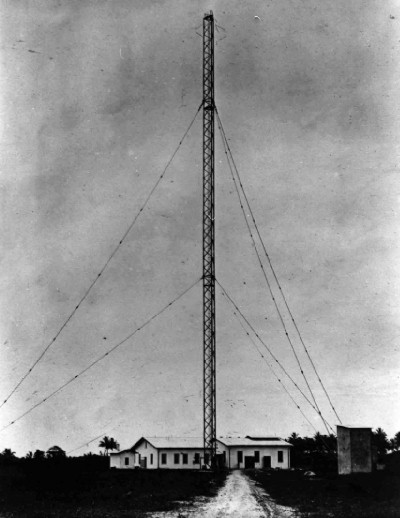
Radio Station at
Kamina in 1914
From from
WikiCommons |
|
In 1911 it was decided to build a large radio
station in Togo. It
would have with masts 120 metres tall and be capable of sending and receiving telegraph
messages from Germany to forward to other smaller
stations in the African colonies and to German ships in
the South Atlantic.
Work on the station was only
completed in June 1914, shortly before the outbreak of
the First World War.
British and French forces
simultaneously invaded Togo in August 1914 with the
intention of capturing the radio station.
The Germans
had no regular troops in Togo only local Polizeitruppe
and German reservists so a strong defence was not
mounted. Instead they retreated to Kamina fighting small
skirmishes along the way.
Around the radio station they
had constructed defensive trenches and machine gun posts
but realising they were out numbered the German force
prepared to surrender without a fight.
They destroyed the radio
station on the night of the 24th August 1914 so it
could not fall into enemy hands and opened negotiations
for a truce on the 25th. On the 26th August 1914 the
acting German governor,
Major von Doering accepted the surrender.
Today the remains of the
radio station can still be seen scattered around the
area.
A more complete account
of Kamina Radio Sation is told by Marshall Pixley below. |
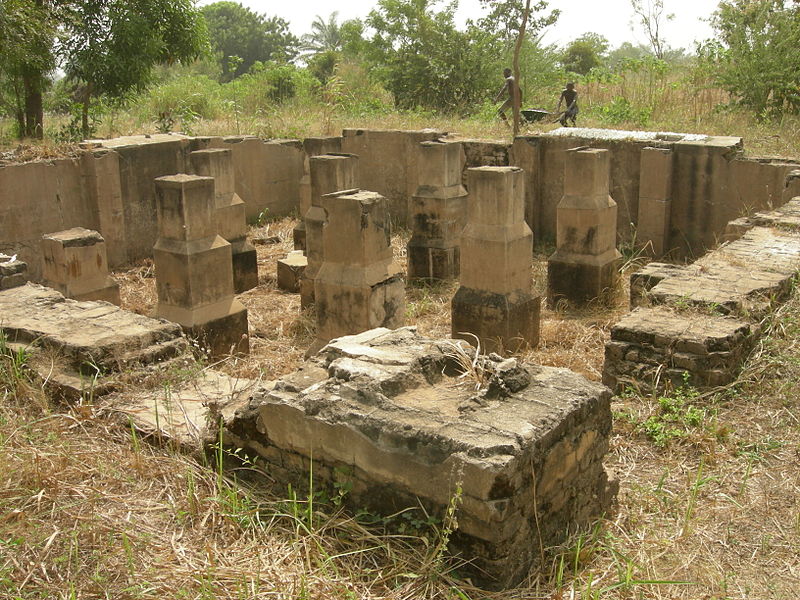
Remains of a building, possibly a
water storage facility for the generators
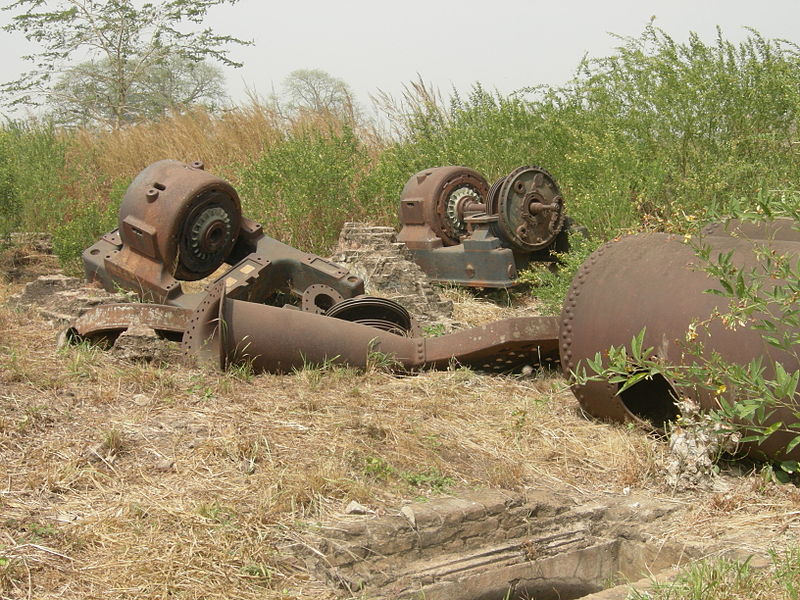
Generators destroyed in 1914
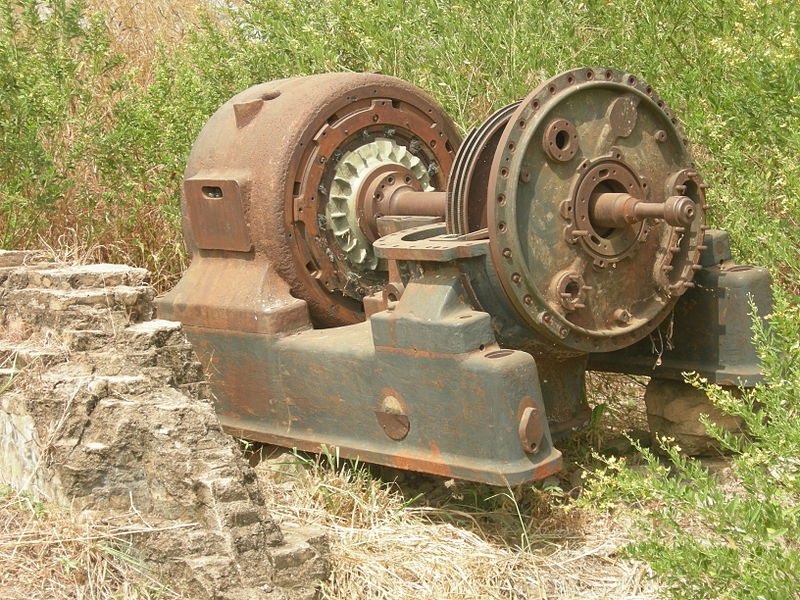
Generator turbine
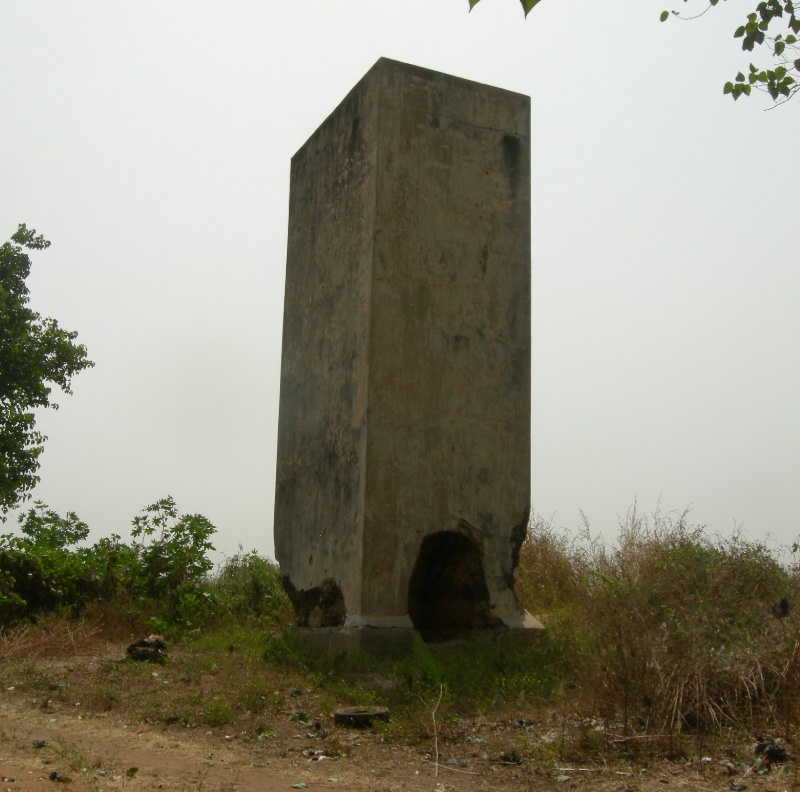
Foundation of the
masts holding ropes
showing blast damage from 1914
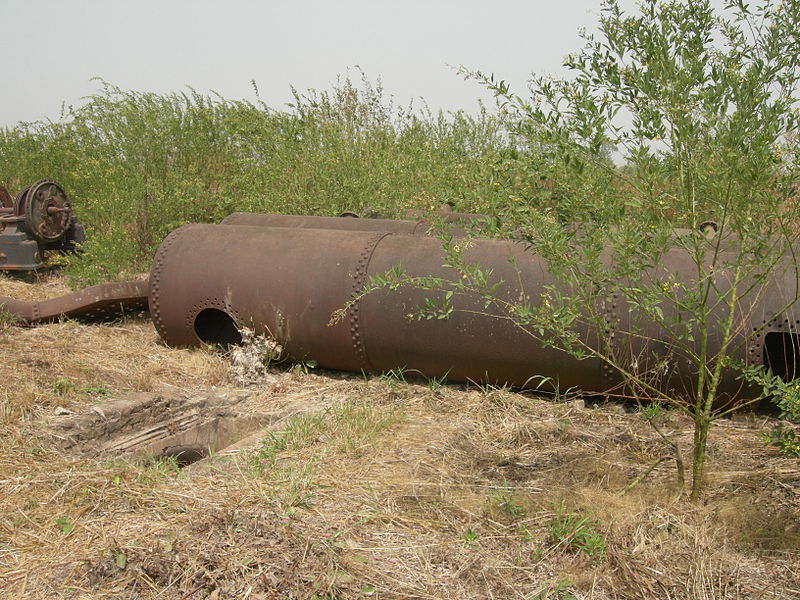
Steam boiler for the
generator
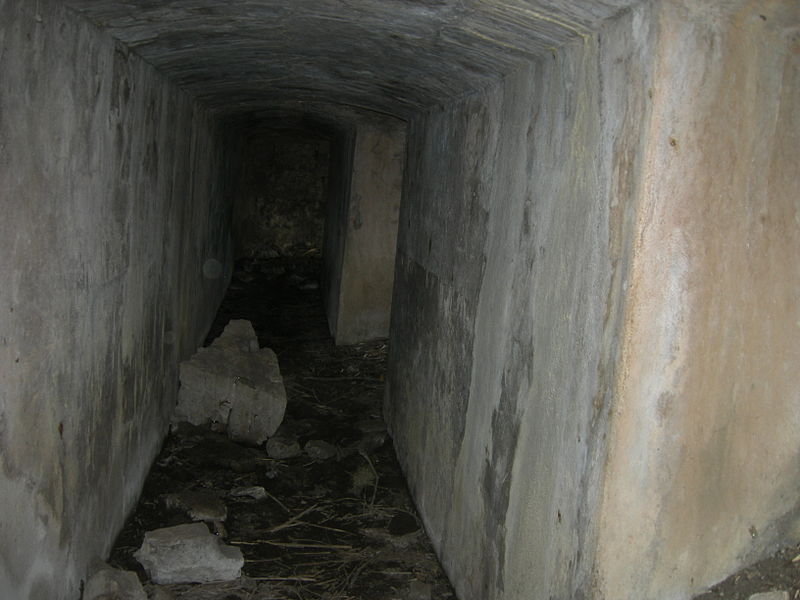
An underground tunnel as part of the
station
The History of
the Kamina Radio Station
by Marshall Pixley
At the same time that African
colonization was taking place, the development of wireless was
also beginning. In 1896, Marconi first demonstrated his system
of wireless telegraphy and in 1901 conducted the first
successful transatlantic radio transmission. He quickly
established the Marconi Company, to provide long distance
telegraphic communications. Meanwhile in Germany, two
other companies were pursuing the same goal. Due to a patent
dispute, the companies merged, forming Telefunken.
In 1911, in order to maintain fast
and reliable communications with its African colonies, the
German government ordered the creation of a large sending and
receiving station in Kamina, Togoland. Telefunken had a massive
research station in Nauen, in the north of Germany, with antenna
masts up to 650 feet tall and a transmitter range of over 3000
miles. The Kamina station would be able to receive and relay
messages from Berlin to its further outposts in southeast and
southwest Africa, and to ships at sea in the south Atlantic.
Telefunken sent Baron Anton von
Codelli to Togoland, to supervise the construction. Initially,
the station was to be built near the town of Anie but the
intended site was destroyed by a hurricane. Kamina was selected
as a second site, it being more protected.
Codelli first built a construction
camp, to include housing for 100 forced labourers, a brick
factory, a woodworking shop, and a 4 1/2 mile railway to haul
stone and materials.
Building of the station itself began
in the summer of 1912, when the first of the antenna towers were
erected. Nine antennas in total were put up, each with a height
of almost 250 feet. The footprint of the entire complex was over
43,000 square feet, and included the receiver/transmitter
station, a steam generating plant, a cooling tower, wells,
pumps, and administrative offices. The two steam generators
produced 1000 horsepower, enabling the transmitter to put out a
100 kilowatt signal. This allowed for communications of up to
5900 miles.
The sending and receiving equipment
were connected on 1 April 1914, and made successful contacts
with the station in Nauen.
War broke out in Europe in July 1914
and word of the opening of hostilities quickly spread to Africa.
Between August 6 and 9, 1914, British and French troops entered
Togoland from both the eastern and western borders, and through
the port at Lomé, on the southern end of the country. Their aim
was to subdue German forces in the colony, but more importantly,
to capture the radio station and disrupt communications with
Germany's colonies further south.
There were few regular German troops
in the colony. Only a handful of officers and NCOs, who
commanded a force of about 700 native police and paramilitary.
Allied troops soon pushed the German and native forces back
towards Kamina. By 21 August, the Germans had formed a
well-defended position around the city, along the River Chra.
The French attempted a number of assaults on the 22nd, all of
which failed. Despite good defences and plenty of supplies, the
Germans abandoned their lines during the night of the 22nd, and
formed a new line around the radio station itself. Two nights
later, the German commander, Major Hans-Georg von Döring,
ordered the destruction of the station. The antennas were blown
up, along with all the electrical equipment. Then von Döring
surrendered his remaining men to the British.
During its short life, the station
at Kamina sent 229 messages between Germany and its colonies.
The station was never put back into operation. Today you can
still see the remains of some of the buildings and parts of the
generators lying about the site, in surprisingly good condition.
Recommended
External Links
Axis History Forum with a photo of the generators in working
order
German Wikipedia Page on the Kamina Radio Station
German Wikipedia Page on Colonial Radio Stations
Funkentelegrafie und deutsche Kolonien by Michael Friedewald
|